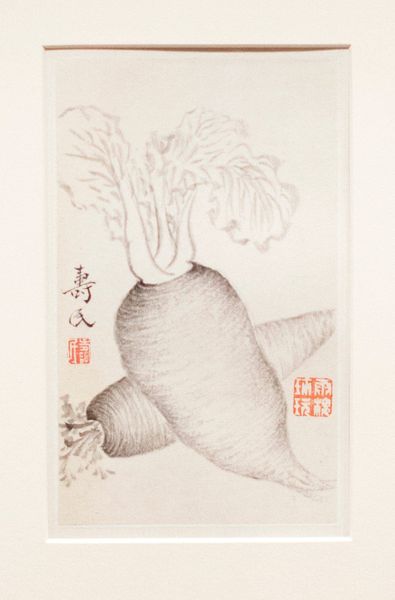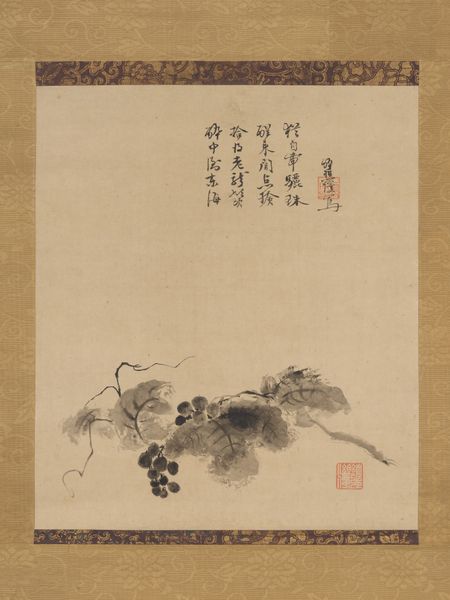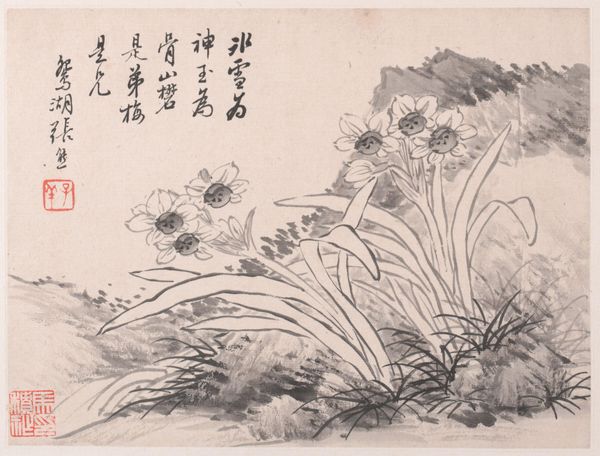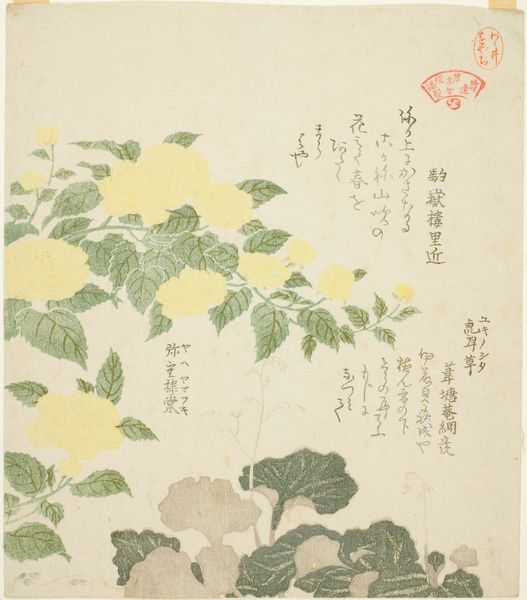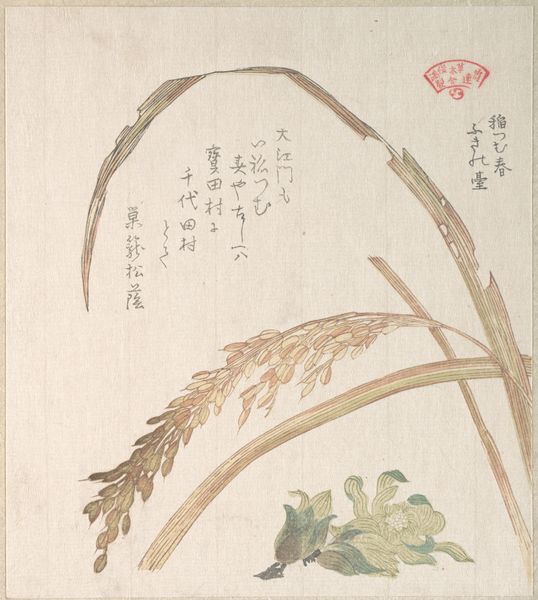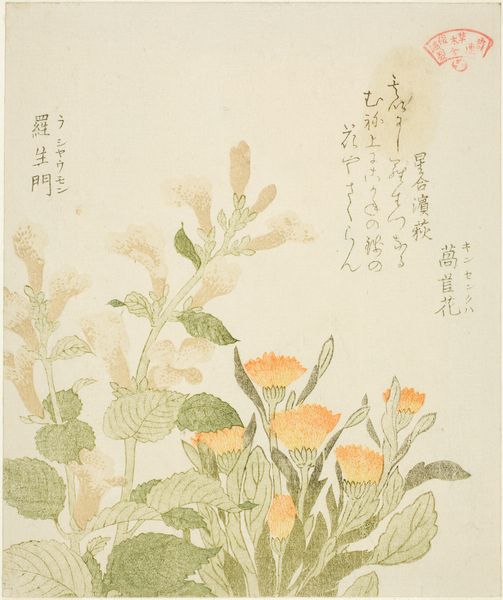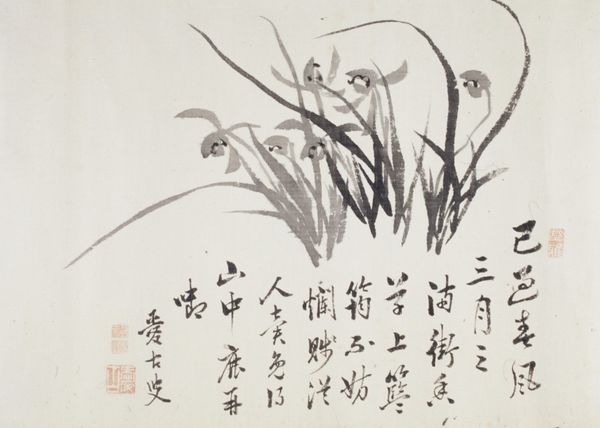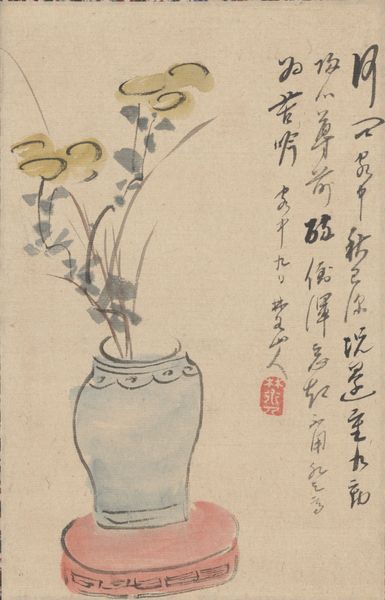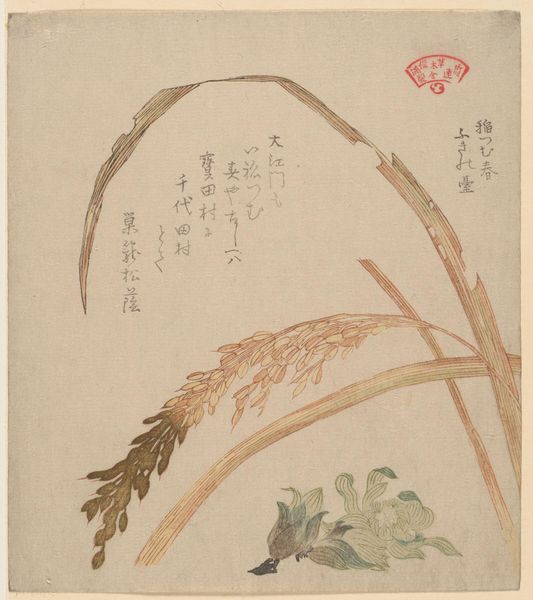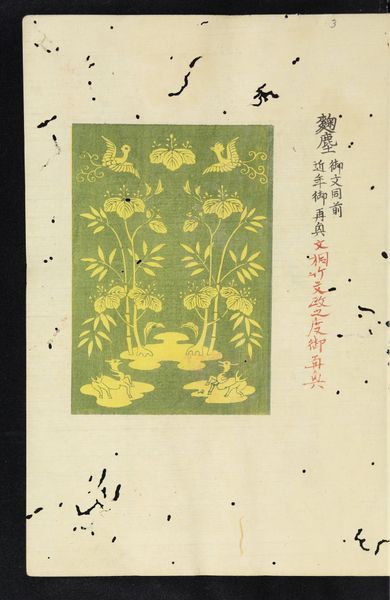
drawing, paper, ink, pencil
#
drawing
#
organic
#
ink paper printed
#
asian-art
#
paper
#
ink
#
pencil
#
line
#
calligraphy
Dimensions: 7 1/2 x 4 1/2 in. (19.05 x 11.43 cm) (sheet)
Copyright: Public Domain
Bian Shoumin made this ink on paper painting called Bok Choy in eighteenth-century China. The image of bok choy, or Chinese cabbage, goes beyond its simple representation as food. During the Qing Dynasty, of which Bian Shoumin was a part, the literati—scholar-officials—often used paintings of plants, animals, and landscapes to express their values and status. The bok choy, in particular, may symbolize purity and integrity, given its simple, unadorned form and association with the humbler aspects of life. This symbolism served as a subtle critique of the political corruption and excesses of the imperial court. Bian Shoumin himself was known for his independent spirit, refusing official appointments and choosing instead to live as a professional artist. His choice of subject matter and style reflects this independence and perhaps a veiled commentary on the social structures of his time. Understanding this artwork requires looking into the historical context, including the political climate, social values, and the artist's biography. Researching the Qing Dynasty's literati culture will help uncover the deeper meanings embedded in this seemingly simple painting.
Comments
No comments
Be the first to comment and join the conversation on the ultimate creative platform.
